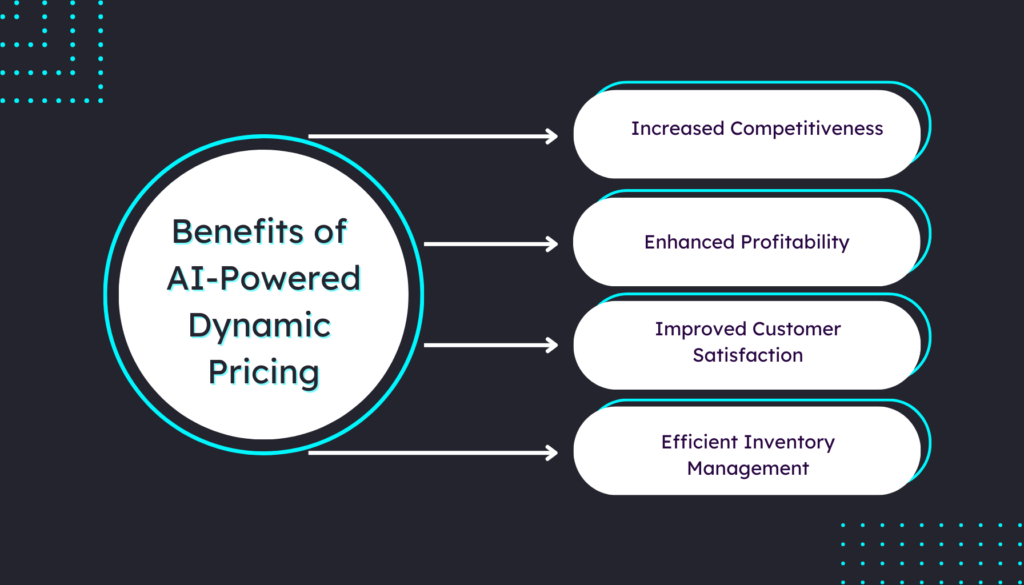Leveraging AI for Dynamic Pricing Strategies in B2B Sales
Pricing has always been a delicate balancing act in B2B sales. Businesses aim to stay competitive while protecting margins, but traditional pricing models often struggle to keep up with rapid changes in buyer demand, supply chain fluctuations, and competitive pressures. Static pricing leaves opportunities untapped and risks leaving revenue on the table.
AI dynamic pricing offers a more advanced approach. By analyzing real-time data, market conditions, and buyer behavior, artificial intelligence enables businesses to set prices with greater accuracy and agility. For B2B organizations, this technology delivers stronger margins, better alignment with demand, and more consistent sales performance.
Quick Takeaways
- Traditional static pricing struggles to account for market changes and buyer behavior.
- AI dynamic pricing uses algorithms and real-time data to adjust prices strategically.
- Benefits include optimized margins, stronger competitiveness, improved forecasting, and personalized buyer experiences.
- Adoption requires careful attention to data quality, integration with sales systems, and organizational alignment.
- AI-driven pricing helps B2B companies respond faster to shifts in demand and create long-term growth opportunities.
From Static Models to AI Dynamic Pricing
Traditional B2B pricing models rely on fixed lists, manual adjustments, and occasional updates. While straightforward, these methods lack flexibility. They fail to capture short-term market opportunities and often rely heavily on historical data.
AI dynamic pricing replaces guesswork with advanced analytics. Algorithms process large volumes of data, ranging from historical sales and customer segments to competitor activity and supply conditions. The system then recommends or sets prices that align with current market realities. These adjustments can happen in real time, ensuring that businesses remain competitive while protecting margins.

For example, an industrial supplier can use AI to monitor fluctuations in raw material costs. Instead of waiting weeks to update price sheets, the supplier can adjust pricing immediately, ensuring profitability while maintaining customer trust. This shift from static to dynamic models allows companies to adapt faster and capture more value.
Key Benefits of AI Dynamic Pricing in B2B Sales
Optimized Margins
AI-powered systems continuously evaluate the best possible price for each product or service. They identify thresholds where buyers remain engaged while margins remain strong. This precision reduces the risk of underpricing and protects profitability in competitive environments.
Stronger Market Competitiveness
With AI dynamic pricing, businesses can adjust rates in response to competitor movements and market signals. Real-time insights ensure pricing decisions align with market conditions, giving B2B sellers a sharper competitive edge.
Improved Forecasting and Planning
Dynamic pricing systems collect and analyze data over time. These insights improve demand forecasting and inventory management. Businesses gain a clearer picture of buying cycles, seasonal shifts, and market patterns, enabling better planning and resource allocation.
Personalized Buyer Experiences
AI dynamic pricing can also consider individual buyer profiles. Factors such as purchase history, order volume, and relationship length influence tailored pricing recommendations. Buyers benefit from customized offers that reflect their value, strengthening loyalty and long-term partnerships.
Stronger Sales Alignment
Dynamic pricing supported by AI ensures sales teams have access to consistent, data-backed pricing guidance. Instead of relying on manual discounting or judgment calls, reps can present buyers with pricing that reflects market realities and company goals. This alignment reduces internal conflict over pricing decisions and creates more predictable revenue outcomes.

Practical Applications of AI Dynamic Pricing
B2B companies across industries can apply AI dynamic pricing to enhance operations:
- Manufacturing: Adjusting prices in line with raw material costs, energy prices, and production output.
- Wholesale Distribution: Managing large product catalogs with automated updates tied to supply and demand.
- Technology Services: Offering flexible subscription or usage-based pricing that responds to client consumption patterns.
- Logistics: Modifying rates based on fuel costs, shipping demand, and capacity availability.
- Professional Services: Adjusting project-based pricing according to resource availability, demand levels, and client scope requirements. This approach ensures services remain profitable while delivering competitive value to clients.
Each of these applications highlights how AI turns pricing into a proactive growth strategy rather than a reactive task. Businesses gain the ability to respond quickly to shifting conditions while providing value to their customers.
Considerations for Successful Adoption
While the benefits are significant, success with AI dynamic pricing depends on a few critical factors:
Data quality is fundamental. AI systems rely on accurate, comprehensive information to make reliable recommendations. Inconsistent or incomplete data limits the effectiveness of pricing models.
Integration with existing systems ensures pricing decisions align with sales, finance, and customer management platforms. Seamless integration reduces friction and keeps teams working with consistent information.
Organizational alignment is equally important. Sales, finance, and operations teams must collaborate on pricing strategies and trust the AI’s recommendations. Clear policies and change management support adoption and long-term success.
Transparency and communication with buyers matter as well. Businesses must ensure pricing adjustments remain fair and explainable. AI should enhance trust, not erode it. By communicating openly about value and flexibility, companies maintain strong relationships while implementing dynamic pricing models.
Driving Growth with AI Dynamic Pricing
B2B pricing strategies have a direct impact on revenue growth, competitiveness, and customer satisfaction. Static approaches often fail to keep pace with market dynamics. AI dynamic pricing provides a smarter alternative by delivering real-time insights, improving margin control, and creating more tailored buyer experiences.
Organizations that adopt AI-driven pricing strategies gain the agility to respond to changing conditions and the intelligence to plan for the future. With careful implementation, AI dynamic pricing becomes more than a technology upgrade—it becomes a driver of growth and profitability across the entire business.
Ready to unlock smarter pricing strategies that drive revenue growth? Televerde’s demand generation solutions combine data, strategy, and expertise to help you connect with buyers and maximize results. Contact us today to get started.


